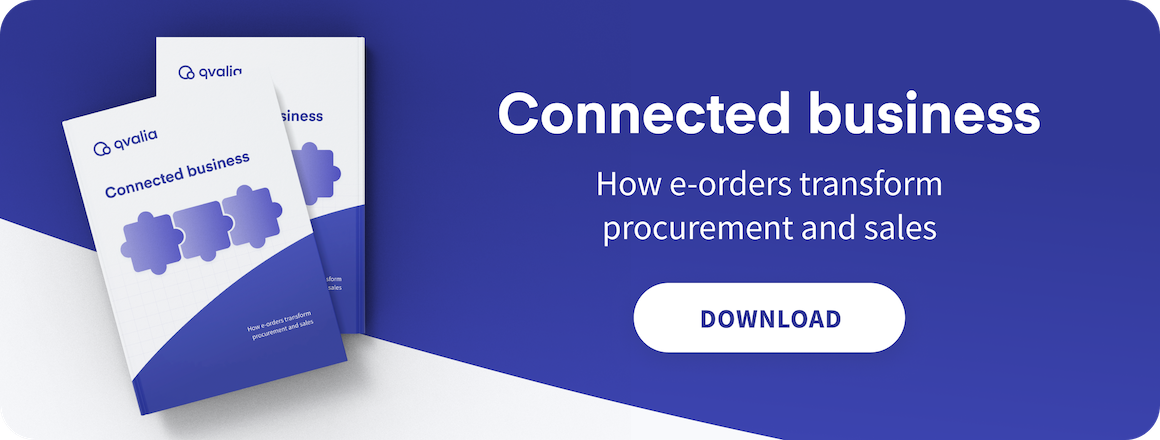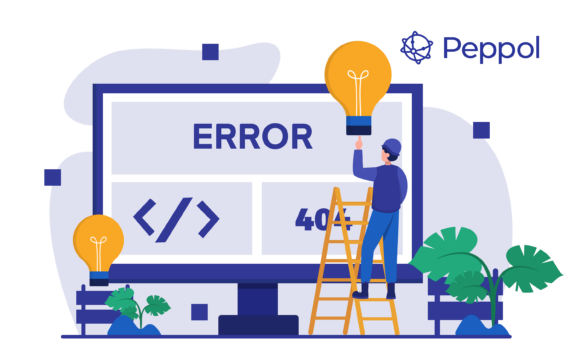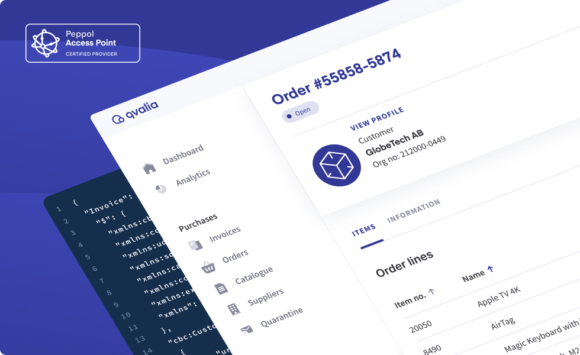
In procurement, the broader spectrum of standardized business messages used in transactions between business partners marks a significant shift towards efficiency and digital integration.
Adopting electronic ordering (e-ordering) systems and dynamic response messaging presents a new era in the automation, control, responsiveness, and streamlining of business workflows, accounting practices, and sourcing strategies.
Essentially, this innovation represents a pivotal next step in the journey of financial digital transformation, building upon the foundation laid by e-invoicing. These are the main benefits of e-order management for your business.
Top benefits of e-order management
1. Enhanced process automation
E-orders elevate the concept of automation beyond the confines of the invoicing process to encompass the entirety of the sales and purchasing workflow. From the initial order to the final payment processing, each step can be seamlessly integrated and automated, significantly reducing manual labor and the risk of errors.
2. Authentication and security
By mitigating the risk of fraud from unauthorized purchasers, e-orders significantly enhance business security. The authentication of the buying entity is secured through procurement and ordering systems, further reinforced by participation in the Peppol network. Moreover, electronic orders are encrypted and securely stored, minimizing potential fraud or data breaches.
3. Reduced errors
Manual data entry is inherently prone to errors, leading to costly and time-consuming corrections. E-orders drastically minimize the likelihood of such errors by facilitating automatic data transfer between systems, leveraging e-catalogs, and integrating with e-commerce websites through punchout technology, eliminating the need for manual input.
4. B2B e-commerce enabler
E-ordering catalyzes efficient B2B e-commerce, allowing companies to place and receive orders online via Peppol, fostering improved customer service, control, and growth. The integration of punchout technology—combining process efficiency, order messaging, and shopping cart functionalities—makes B2B e-commerce even more seamless than traditional consumer shopping experiences.
5. Speed and Efficiency
Processing e-orders at unprecedented speeds offers a substantial advantage over traditional ordering methods. Unlike emails or paper-based orders, electronic orders are transmitted instantaneously and without loss, streamlining the procurement process.
6. Deeper analytics
Electronic transactions unlock a wealth of data for in-depth analysis. E-orders, closer to the purchasing event than invoices, provide digital captures of transactional information that can be analyzed to uncover purchasing patterns, evaluate supplier performance, and identify cost optimization opportunities.
Connecting your business: The next step
The shift towards e-ordering is not merely an incremental change but a transformative step that deepens the integration and automation of business processes. As companies navigate the complexities of the digital age, e-orders become an indispensable medium for enhancing efficiency with automation, security, and analytical capabilities.
The journey towards financial digital transformation is ongoing, and e-ordering is a critical milestone that promises to redefine the procurement landscape. Download the handbook Connected Business and get started.



